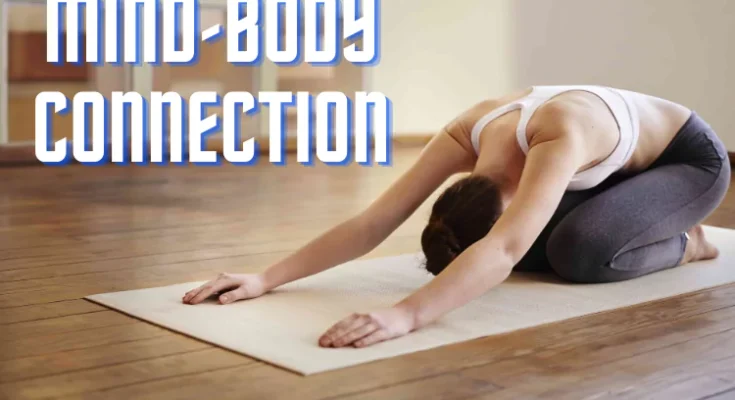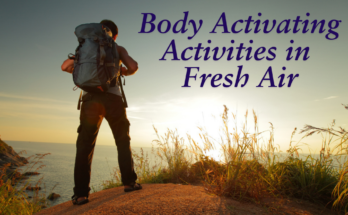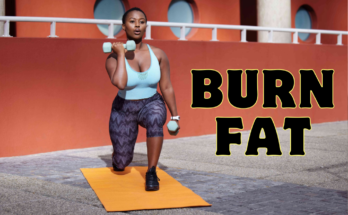Hey People! In the recent past, stress has become a permanent feature in the lives of many individuals. With the pressure at the workplace and financial problems followed by social networks and other expectations, stress intruded into all spheres of existence.
Allostatic load, also brought about by chronic stress, takes a toll on overall health and may bring about anxiety, depression, sleep disorders, and other diseases such as cardiovascular diseases.
In this article, you will learn more about how yoga can help with stress from an atheoretical perspective, some yoga poses that will assist in reducing stress levels, and the results of empirical studies.
Let begin!
Table of Contents
Why Yoga for Stress Relief?
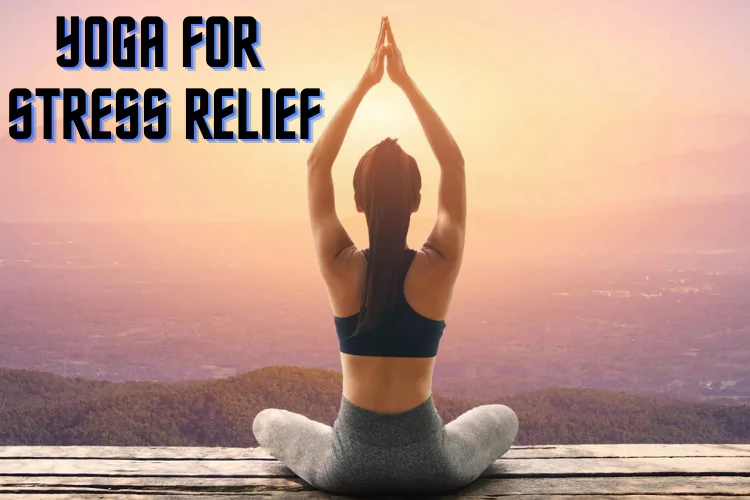
Yoga, the ancient practice that has stood the test of time, is not just a form of exercise, but a holistic system that engages the body, mind, and spirit. Its benefits, discovered thousands of years ago, have been validated by modern research, particularly in the realm of stress relief.
Yoga’s power lies in its ability to trigger the parasympathetic nervous system, also known as the ‘rest and digest’ response, countering the stress response system: the fight or flight.
Stress is defined as changes in one’s body in response to pressures exerted on him. Specific triggered hormones include cortisol and adrenaline, leading to increased heart rate, blood pressure, and muscular tension.
Over time, this chronic stress can lead to long-term health problems such as:
- Anxiety
- Depression
- Sleep disturbances
- Muscle tension and pain
- Weight gain or loss
- Digestive issues
Yoga helps alleviate the above effects by reducing cortisol levels, tightening the muscles, increasing the flow of blood, and calming the brain. This is why many have adopted yoga as one of the best methods of natural stress relief.
Yoga and Stress Hormonal Balance
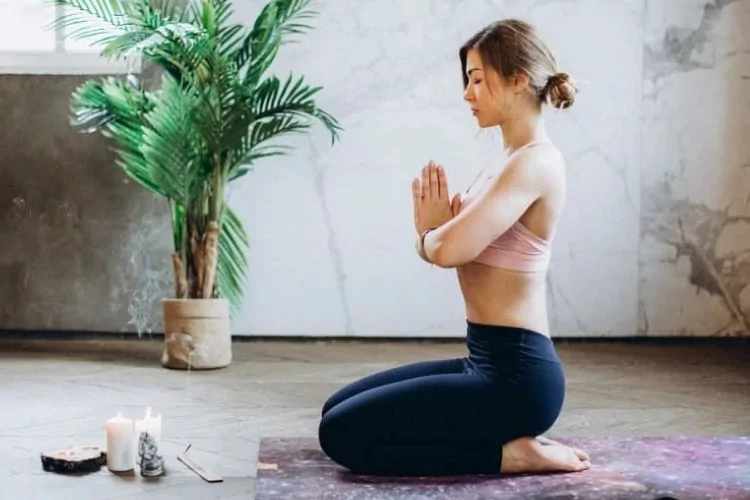
Yoga has many physical and mental benefits that reduce stress, making it an ergonomic stress management tool. Below are some of the key advantages:
Reduction in Cortisol Levels
Cortisol is the stress hormone your body releases. When cortisols are high for an extended period, you may experience a series of unwanted impacts, which include sleep problems or a rise in anxiety.
Research has revealed that practicing yoga separately decreases cortisol levels, easing stress-related symptomology. Research by Cramer et al. in the Journal of Clinical Psychology established that people who undertook yoga had lower cortisol levels than those who did not.
Improved Sleep
Tension arises as one of the most common instigators of sleep disorders, including insomnia and low-quality sleep. Yoga, especially those asanas that remind you of breathing techniques, helps direct the mind to sleep.
According to the National Institutes of Health, the power of new findings indicates that yoga can help increase the quality of sleep of chronically insomniac people so that it can be used as a successful option for stress-caused sleepless nights.
Concentration and Good Thinking Ability
This means that yoga enhances good thinking and mindfulness, which is the ability to focus on the current moment. Besides enhancing the state of awareness and focus or concentration, it also prevents anxiety and repetitive thinking. Research done by Psychology Today discovered that yoga and other related mindful activities enhanced brain performance and reduced stress levels.
Relief from Physical Tension
Pressure is more often evidenced physiologically, and complaints might include muscle spasms, headaches, and back pain. Yoga accelerates the process of releasing conditioned tension by stretching and strengthening muscles.
The postures often facilitate blood circulation to all parts of the body where tightness normally occurs, such as the neck, shoulders, and back.
The Mind-Body Connection And Yoga
Flexibility is also a good antidote to stress because one aspect of yoga practice concerns the physical body. In addition to physical work done in the gym, the mental part of yoga involves regulating one’s breathing (pranayama) and performing meditation work on the mind, which helps redirect focus from stressors.
Preliminary sets of controlled breaths help calm the nerves, particularly for those experiencing nervousness. Prayer respiration stimulates the parasympathetic system, reducing the frequency of heartbeats. Thus, stress-regulating techniques like nadi shodhana (oxygen saturation)and ujjayi breath (victorious breath) are standard in yoga.
The following outline demonstrates the literature supporting the use of yoga to deal with stress.
Yoga, too, has been proven beneficial time and again while dealing with stress. For example:
A 2016 study by Cramer et al. in JAMA Internal Medicine stated that yoga was as helpful for symptoms of anxiety and depression as CBT, the two conditions often caused by stress.
The meta-analysis, published in the Journal of Alternative and Complementary Medicine, determined that yoga can greatly reduce anxiety and stress by promoting relaxation and mindful awareness.
Another research done by V. Mangla on the effect of yoga on the clients’ stress, anxiety, and depression levels also revealed that there was at least a 30% improvement among the clients, though it was conducted in 2018.
The following video explains about Mind-Body Connection And Yoga:
Yoga Poses for Stress Relief
The current article finds a few of the most effective yoga poses to address stress and its physical and mental symptoms. Here are a few easy exercises that can be followed to reduce tension and get relaxed:
Child’s Pose (Balasana)
It is most rejuvenating and therapeutic, good for clearing tightness in the back, neck, and shoulder area. This enables extraordinary deep breathing and soothes the anxious nervous system.
How to do it:
1. Begin in a kneel-down position, bend forward, and go down on your heels.
2. Bend your hips back and, placing your forehead on the floor, lower your torso toward the floor.
3. Place your arms before you, or keep them by your sides.
4. After that, remain in the pose for one to three minutes and breathe deeply.
Cat-cow Pose
The series of movements assist in alleviating tension in the spine and, in addition, host conscious breathtaking techniques.
How to do it:
1. Position yourself on the floor with your palms flat at the level of your shoulders and your knees directly below the hip joints.
2. Exhale, round your back, tuck your chin in and curl your tailbone under—basically, an upside-down U shape (baby pose).
3. Breathe, arch your back, pull your CHEST to your BELLY, and head to the FLOOR like a CAT.
4. Perform the twist for 5-10 times, always synchronizing the action with the breath.
Benefits: Legs Up the Wall Pose (Viparita Karani)
Read the full story of relaxation and stress-free living through this gentle inversion, which increases blood circulation to the upper part of the body to relax the nervous system.
How to do it:
1. Find a suitable place, lie facing the wall, and raise your legs against the wall.
2. Stand erect with your arms hanging freely at your sides, your hands with fingers outstretched upwards.
3. Bring your awareness to your breath and remain in the position for 5-10 minutes.
Savasana (Corpse Pose)
Savasana is called the final resting pose and is maybe the most important pose of the whole practice. It is particularly done at the end of yoga practice but can also be practiced individually to help achieve deep relaxation and fight stress.
How to do it:
1. Get down on your back with your legs stretched in front of you, arms at your sides, and your hands facing upwards.
2. Take a deep breath and pay attention to your breathing, trying to calm down all your muscles.
3. Charge yourself in this pose for several minutes, releasing all the tension that you feel.
Conclusion
In our fast-paced society, yoga for stress is not just the latest fad—it’s a proven method that holds numerous valuable mental and physical health rewards.
Even if you are a complete novice or have practiced yoga in the past, the incorporation of yoga can provide you with a number of aspects that are core to stress, anxiety, sleep disorders, and weak emotional strength.
Yoga for stress reduction incorporates breathing exercises, muscle movements, and relaxation techniques to compose a comprehensive stress-relieving exercise.
FAQ
1. How frequently should a person do yoga to combat stress?
For optimal effects, it is recommended that one do yoga for at least 20-30 minutes, 3-4 times a week. They should do this at least once a day or even every two days, but even shorter sessions will offer stress relief benefits if used consistently.
2. Is yoga for stress relief good for me if I am flexible?
You do not have to be flexible to begin or practice yoga. My knowledge about Yoga is that it involves aligning your body and then stretching it as you progress through the exercises. When doing these exercises, concentrate on the breathing and the actual journey, not the destination.
3. Can yoga help with anxiety?
Of course, yoga may be used as an effective method for anxiety reduction. Some yoga postures and pranayama techniques, such as pranayama (nostril breathing), are highly beneficial in relieving anxiety in the mind.

